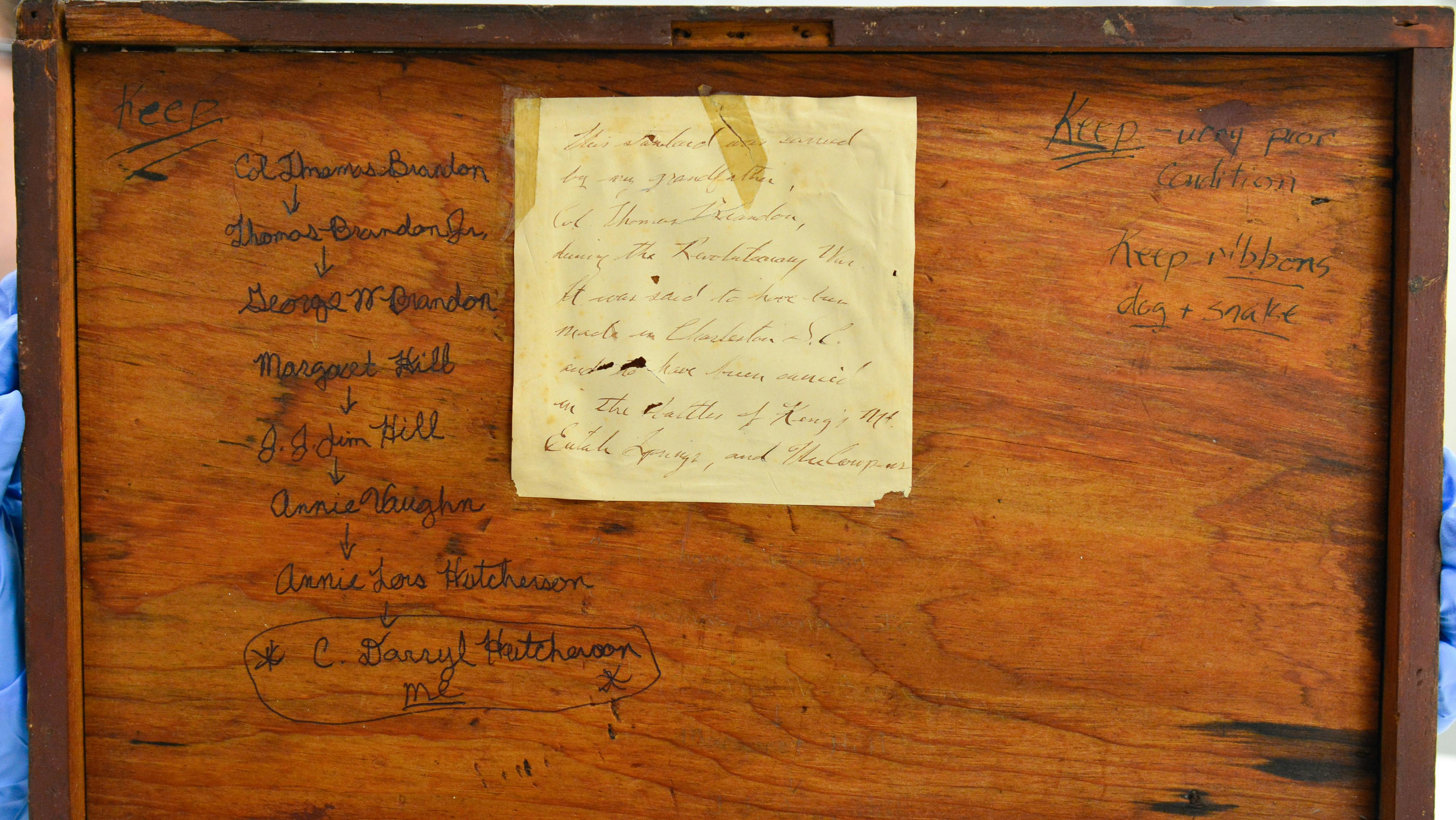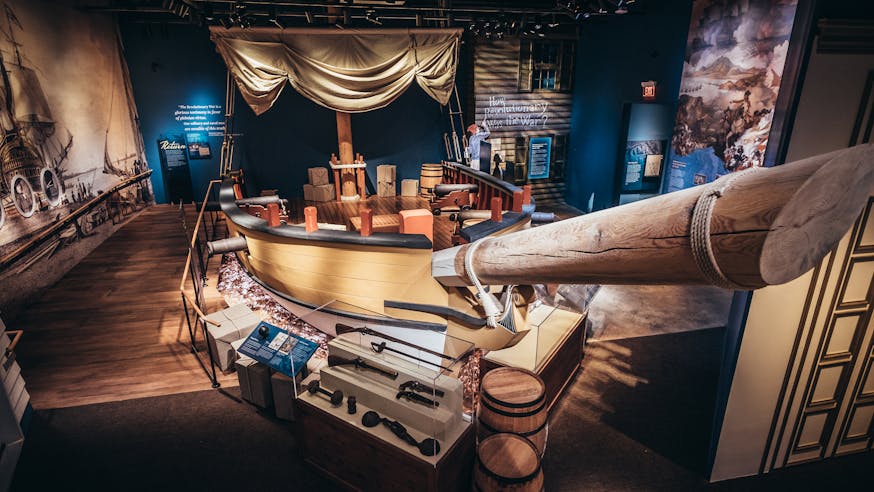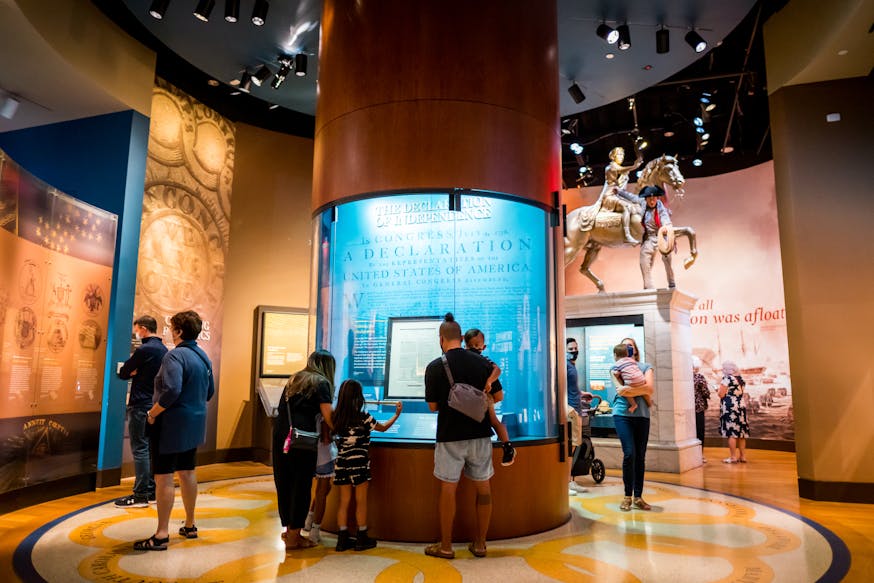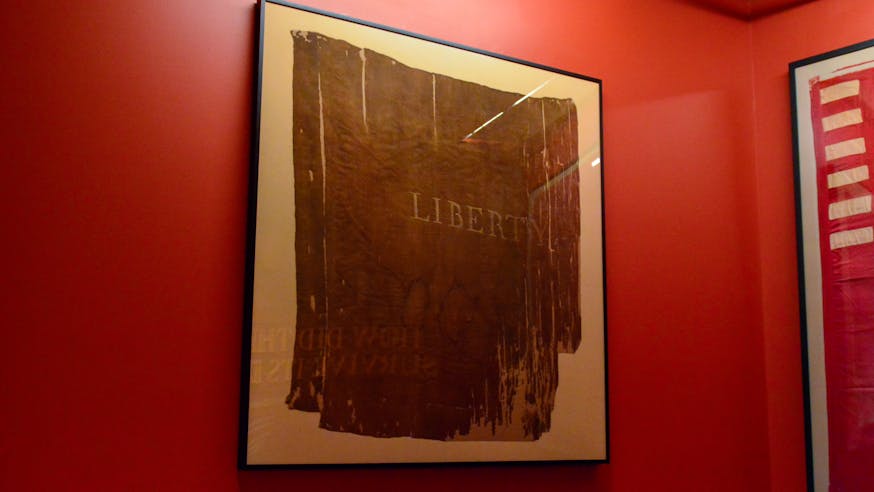News & Updates
Now on View: New Display on South Carolina’s 2nd Spartan Regiment
June 9, 2023
By the end of 1778, the Revolutionary War in the South reached a bloody turning point. Violence between Loyalist and Revolutionary forces increasingly targeted non-combatants and civilians.
Just before the New Year, British forces captured Savannah, Georgia. In order to increase protection for its population, South Carolina’s revolutionary government created a new regiment of militia.
The 2nd Spartan Regiment of militia served in dozens of battles across the state from 1779 until the end of the war in 1783. Individual companies, battalions, or individual members of the regiment were present at Stono Ferry, Hanging Rock, Musgrove’s Mill, King’s Mountain, Ninety-Six, Eutaw Springs, and dozens of other skirmishes. Also known as the “Fair Forest Regiment” and led by Colonel Thomas Brandon, its men experienced the brutality of a civil war.
Take a closer look below at objects featured in the Museum’s core galleries in a case titled “At War with a South Carolina Regiment, 1779-1783.”
The South Carolina Continentals & Militia
With the outbreak of hostilities in 1775, South Carolina furnished several regiments for Continental Service. Much of their campaigning took place in the state. South Carolinians faced frequent British raids by sea or from the south, internal fighting with Loyalists, and conflict with British-allied Cherokee communities to the west in the Appalachian Mountains. The regular Continental regiment forces had to be augmented by increasing numbers of civilian militia.
By 1779, with the British Army operating out of occupied Charleston, the South Carolina militia would prove vital to the revolutionary efforts.
Flag of the 2nd Spartan Regiment of Militia
Courtesy of Nick Manganiello and Francine Carrick

After being hidden away for more than two centuries, this flag is on public display at the Museum for the first time since it flew over the regiment during the Revolutionary War. The newly discovered flag is one of fewer than half a dozen surviving Revolutionary War flags from the South. The regimental flag of the 2nd Spartan Regiment marked its position on the battlefield. The flag shows a “spartan dog” as well as a rattlesnake. The dog symbolizes a bloodthirsty man, from a reference in Shakespeare’s Othello. The snake appears in many Middle and Southern colonial images as an American symbol of defense. Revolutionaries often used the rattlesnake to symbolize American resistance, but questions remain about the meaning of the snake and the dog. Does the snake represent American resistance and unity or the British threat? Does the Spartan dog represent scrappy South Carolinians or bloodthirsty redcoats and loyalists?
Gorget
Courtesy of Nick Manganiello and Francine Carrick

Military officers wore a gorget around their necks as a symbol of their authority. Made for a South Carolina officer, this gorget features the great seal that the state’s revolutionary government adopted in 1777, a palm tree growing from a fallen oak, and a figure of hope. It is flanked by liberty on the left and an officer on the right as an angel blows a horn from the clouds above.
Congressional Sword
Courtesy of Nick Manganiello and Francine Carrick

After the Revolutionary War, Congress commissioned a French sword maker named Liger to make 15 swords as trophies for American war heroes. It awarded this sword to General Andrew Pickens of South Carolina for his bravery in leading the militia at the Jan. 17, 1781, Battle of Cowpens.
Battle in the Backcountry
After the fall of Charleston and the defeat of American General Horatio Gates’ Army at Camden on August 16, 1780, both sides turned their attention to the woods and hills of the Western Carolinas. Bands of Loyalist and American militia regularly encountered each other with bloody consequences.
All the while, British forces advanced further inland and northward. Both regulars and Loyalist militia overextended themselves and became prey for Revolutionary forces. On Oct. 7, 1780, southern militia forces including the 2nd Spartan Regiment surrounded and defeated a large Loyalist force at King’s Mountain.
Chest
Courtesy of Nick Manganiello and Francine Carrick

Colonel Thomas Brandon kept the regimental flag of the 2nd Spartans in this box in the years following the Revolutionary War. An inscription inside the case tracks the subsequent owners through the 1900s.
Medal
On loan from Brian and Barbara Hendelson

Congress awarded a gold medal to Daniel Morgan for his service at the Battle of Cowpens. One side of the medal depicts America as a female figure in Native American dress, placing a crown of laurels on General Morgan’s head. The other side depicts Morgan leading Continental soldiers in a charge during the Battle.
The Philadelphia Mint struck this medal to replace the original, which was made in Paris in 1789 and stolen from a Pittsburgh bank in 1818.
The Battle of Cowpens
The Battle of Cowpens turned the tide of the war in the South. While British forces still held the coastal cities of Charleston and Savannah, the Revolutionaries gradually reclaimed control of the countryside.
On Jan. 17, 1781, the 2nd Spartan Regiment, around 250 men strong, found itself in the American 2nd line, commanded by Andrew Pickens. The Army’s commander, General Daniel Morgan, used the terrain and a series of defensive lines to slow and then stop the British. The Americans then counterattacked, winning the day.
Having suffered heavy casualties at Cowpens, and at the Battle of Guilford Courthouse on March 15, British General Cornwallis made the fateful decision to abandon the vexing Carolinas and marched his troops across the North Carolina border into Virginia.
Button
Courtesy of the New-York Historical Society

This button adorned the coat of an officer of the 17th Light Dragoons, one of the British units that fought at Cowpens. The 17th's commander, Lieutenant Henry Nettles, led about 50 mounted troopers. During the battle, Lt. Col. Banastre Tarleton ordered the troopers from the 17th to attack retreating militia on the American left flank.
Initially successful in breaking the flank, the 17th was later overwhelmed when American General William Washington of the 3rd Dragoons counter-attacked and drove off the assault.
Cartridge Box Badge
Courtesy of Nick Manganiello and Francine Carrick

Designed for the 71st Regiment of Foot, this cartridge box badge features a thistle in the center to emphasize the unit's Scottish origins. The 71st, also known as Fraser’s Highlanders, arrived in North America in late 1776.
By 1778, most of the regiment moved south. The 71st fought hard through the Southern Campaign and saw action at the Battle of Cowpens. Ultimately, the regiment surrendered alongside Cornwallis's army at Yorktown in October 1781.
Cartridge Box Badge
Courtesy of Nick Manganiello and Francine Carrick

A member of the 7th Regiment of Foot, also known as the Royal Fusiliers, wore this cartridge box badge.
The regiment was stationed in Canada when the Revolutionary War began. Having defeated the American invasion at Quebec, the regiment served in New York before being shipped to the South. At Cowpens, the 7th suffered heavily during the American counterattack.
Cross Belt Plate
Courtesy of Nick Manganiello and Francine Carrick

This engraved plate once decorated the shoulder belt of a soldier from the 4th Battalion, Royal Artillery. The entirety of the 4th Battalion served in the American War, with its 6th Company bringing two cannons to the Battle of Cowpens. Every one of the 24 men in this company became casualties during the battle.
Learn More

A Revolutionary War
Core Exhibition
Plan Your Visit
